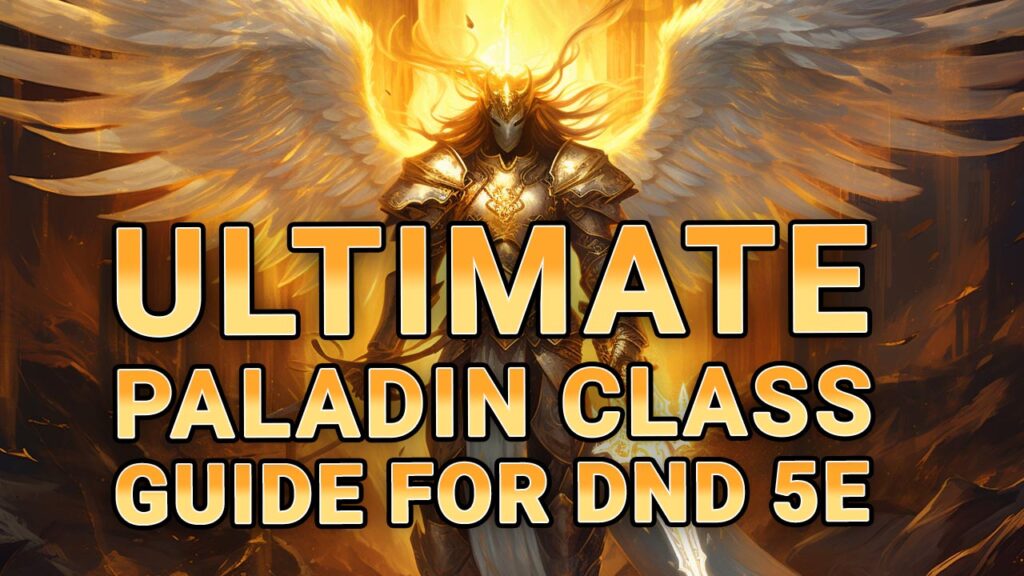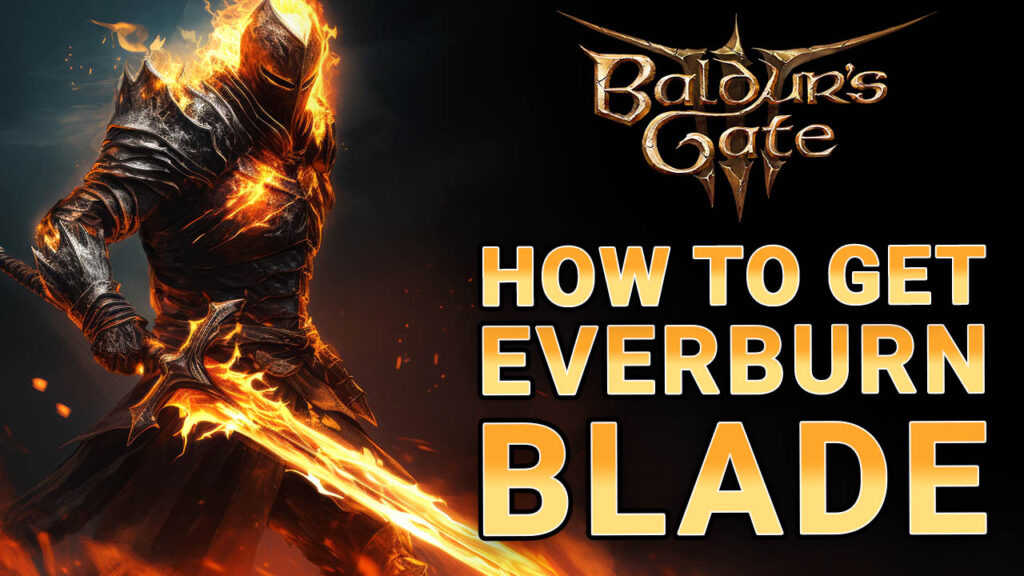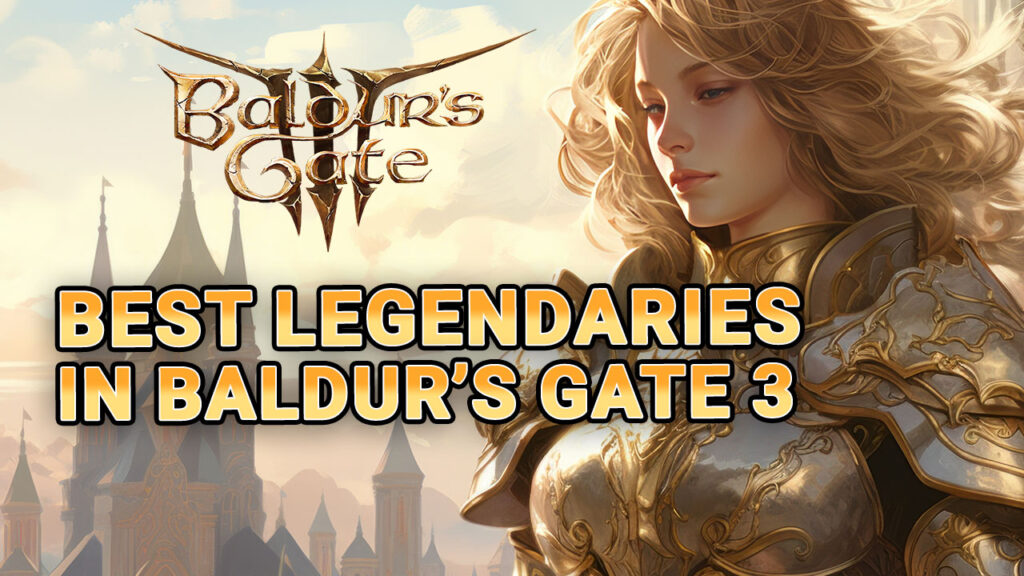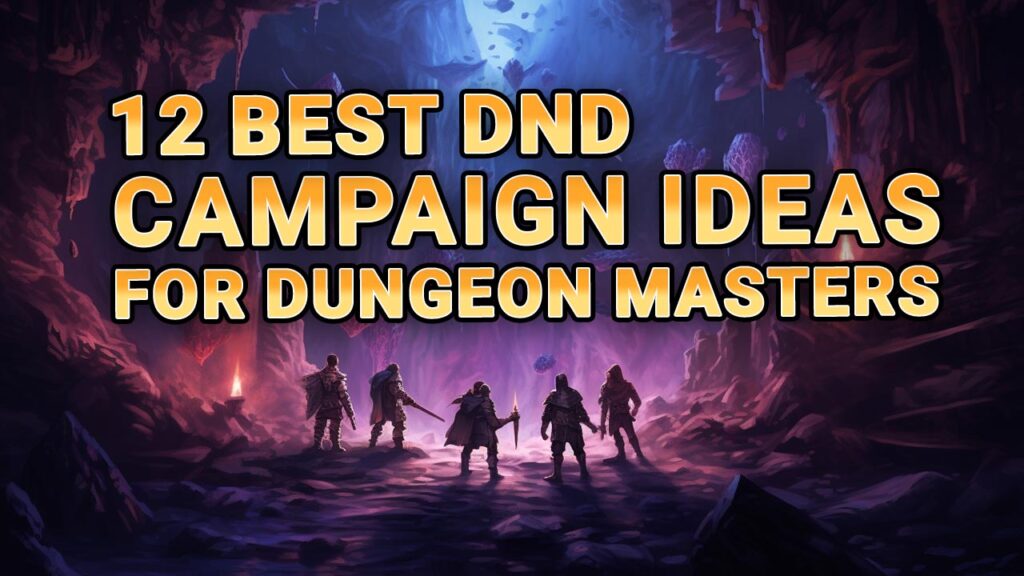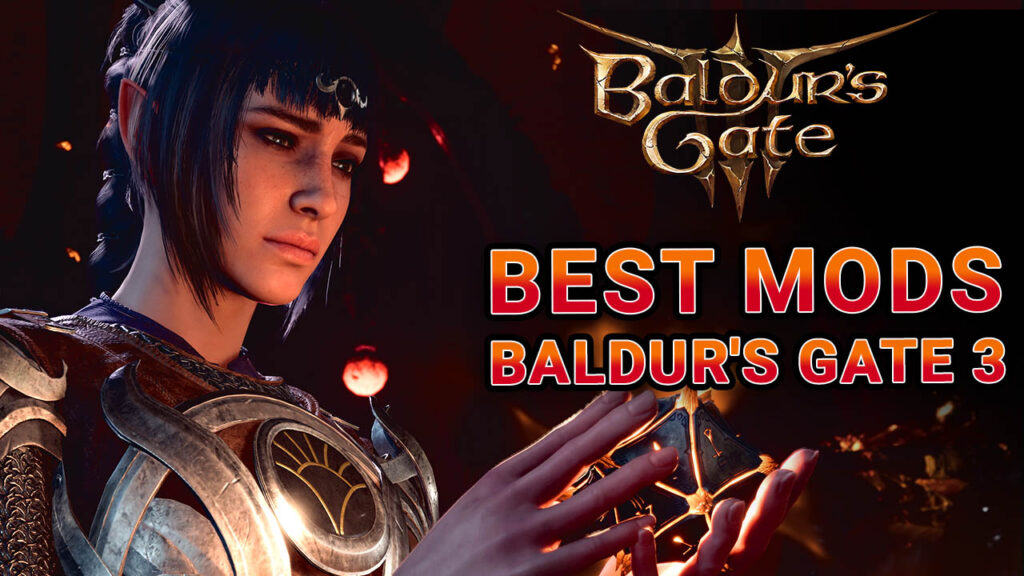Oathbreaker Paladin/Warlock Multi-Class Build in Baldur’s Gate 3
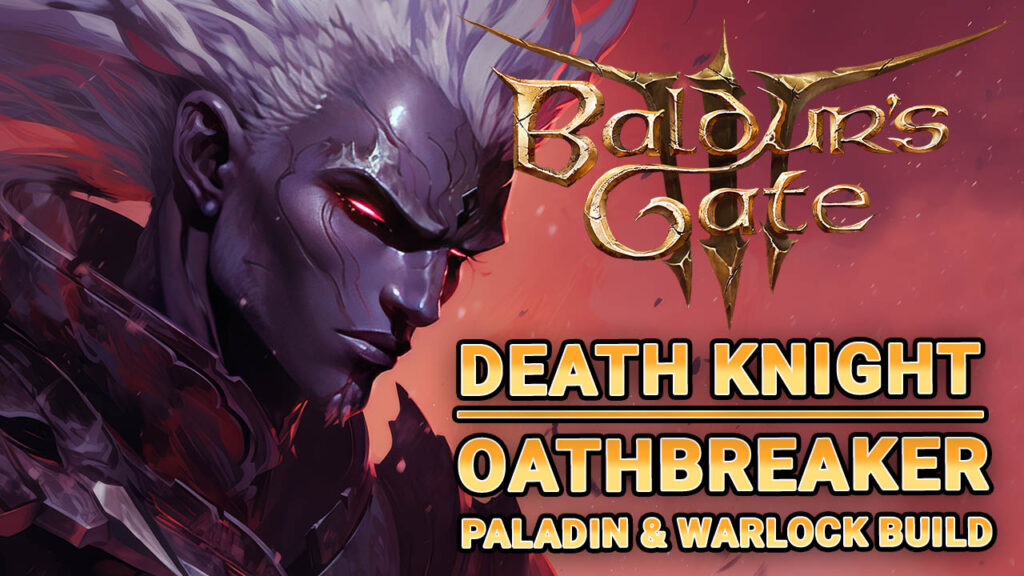
Embark on a journey through the labyrinthine world of Baldur’s Gate 3 as a “Death Knight”, the ultimate synthesis of an Oathbreaker Paladin’s martial valor and a Warlock’s eldritch sorcery.
This comprehensive guide serves as your definitive roadmap, meticulously detailing every aspect of this multi-class build. From the nuances of spellcasting and combat tactics to the intricacies of class features and racial advantages, this guide is your all-encompassing manual for mastering the art of the Death Knight.
Character Creation
Creating a character for a complex multiclass build like the Oathbreaker Paladin/Warlock involves multiple layers of decision-making. From race and subclass to background and ability scores, each choice you make has a profound impact on your character’s capabilities and role within the party. This section provides an in-depth analysis of each aspect of character creation, exploring the mechanics, synergies, and tactical implications of your choices.
Race Selection
- Zeriel Tieflings: This race is an excellent choice for a Death Knight because it offers Searing Smite and Brandish Smite without using spell slots. These abilities synergize well with the Paladin’s Divine Smite, allowing you to deal massive damage in a single blow.
- Half-Orc: The Half-Orc’s Savage Attacks feature grants extra damage on critical hits, which can be devastating when combined with Divine Smite. Additionally, the Relentless Endurance ability can keep you in the fight when you would otherwise be downed.
- Drow: Lore-friendly and offers unique abilities.
- Githyanki: Offers combat benefits like free Misty Step and a free jump.
- Dark Urge: Receives a cape that grants invisibility after a kill, providing tactical advantages.
Subclass and Background
- Oath of Devotion: This is the easiest Oath to break, allowing you to transition into an Oathbreaker. The Oath spells and Channel Divinity options are not to be overlooked, as they provide utility and damage in the early game. Spells like Sanctuary can be used to protect vulnerable party members, and the Sacred Weapon Channel Divinity can turn the tide of a difficult battle.
- Background: While the background might seem like a minor choice, it can offer unique dialogue options and skills that complement your character’s backstory and alignment. For example, the Acolyte background can provide additional religious lore and insight, which can be particularly fitting for an Oathbreaker.
Ability Scores
In the early game, a balanced approach focusing on Constitution for survivability and Charisma for spellcasting is advisable.

Paladin Class Features: The Backbone of Your Build
The Paladin class serves as the foundational core of your Oathbreaker Paladin/Warlock multiclass build. With its focus on melee combat, divine magic, and auras, the Paladin class provides the essential abilities and features that define your character’s role in combat and social interactions.
From the potent Divine Smite to the protective Aura of Protection, each level in the Paladin class enhances your capabilities and offers new tactical opportunities
Level 2: Divine Smite and Fighting Style
Divine Smite: Is your bread and butter for damage output. Every time you hit with a melee weapon attack, you can expend one Paladin spell slot to deal radiant damage in addition to the weapon’s damage. The damage scales with the level of the spell slot used, making it a versatile and potent ability.
The ability to choose to use Divine Smite after you’ve confirmed a hit makes it incredibly powerful and resource-efficient.
Fighting Style Choices
At this level, you’ll also choose a Fighting Style. The options are Defense, Dueling, or Great Weapon Fighting, and your choice should be based on your preferred weapon.
- Defense: Provides a +1 bonus to Armour Class (AC), when wearing armor, making you more resilient and harder to hit.
- Dueling: Grants a +2 bonus to damage rolls when wielding a one-handed weapon, which can be useful if you prefer sword and shield.
- Great Weapon Fighting: If you’re going two-handed, this style lets you reroll 1s and 2s on damage dice, maximizing your damage output.
Level 4: Ability Score Improvement
At level 4, you get access to your first Feat. Here the best option is Ability Score Improvement (ASI).
This is a crucial point in your character’s development. The recommended approach is to increase your Strength and Charisma scores.
- Strength will improve your melee attack and damage rolls.
- Charisma will enhance your spellcasting abilities and the effectiveness of various Paladin features like Aura of Protection.
However, after acquiring the Warlock’s Pact of the Blade, it’s beneficial to respec your character to focus solely on Charisma. This is because your pact weapon will use Charisma for attack and damage rolls, allowing you to streamline your ability scores and become more effective in both melee combat and spellcasting.
Level 5: Extra Attack and New Spells
- Extra Attack: This feature is crucial for your damage output, allowing you to make two attacks instead of one whenever you take the Attack action on your turn. This effectively doubles your chances to apply Divine Smite, making you a formidable damage dealer.
- New Spells: You’ll also gain access to new Paladin spells. “Darkness” can be used to create an area of magical darkness, which can be exploited with the Warlock’s Devil’s Sight invocation for tactical advantages. “Crown of Madness” can be used to turn enemies against each other, providing crowd control.
Level 6: Aura of Protection
This aura adds your Charisma modifier to all saving throws for you and allies within 10 feet. This is a significant defensive boost, making it harder for enemies to affect you and your allies with debilitating spells and abilities, and makes you a linchpin in group encounters.
Level 7: Aura of Hate
Aura of Hate adds your Charisma modifier to damage rolls for you and any allied undead or fiends within 10 feet. While this may not seem immediately useful, it becomes incredibly potent if you use spells or abilities to summon or control such creatures. This feature further cements your role as a damage-dealing powerhouse.
Warlock Class Features: The Dark Side of Your Build
The Warlock class brings a host of arcane abilities and eldritch secrets that perfectly complement the Oathbreaker Paladin’s dark powers.
Opting for the Great Old One subclass, you gain access to a range of spells and features that enhance your utility, control, and damage output. From the iconic Eldritch Blast cantrip to the strategic Eldritch Invocations, each level unlocks new opportunities to refine your combat style and tactical approach.
Level 1: Great Old One Subclass, Eldritch Blast, and Cantrips
- Great Old One Subclass: This subclass opens up spells like “Tasha’s Hideous Laughter,” which can incapacitate an enemy, making them prone and unable to stand until they pass a Wisdom saving throw or take damage, and “Mortal Reminder,” which can reduce an enemy’s healing. These spells offer utility and control options that the Paladin class lacks.
- Eldritch Blast: This cantrip is a Warlock staple, offering a ranged attack option that scales with your Charisma. While you’re primarily a melee combatant, having a reliable ranged option is invaluable for those situations where closing the distance is not feasible. It becomes even more potent when you pick the Agonizing Blast invocation.
- Cantrips: You’ll also choose another cantrip at this level. “Blade Ward” is an excellent choice, providing resistance to bludgeoning, piercing, and slashing damage from weapon attacks until the end of your next turn. This can be particularly useful when you’re the focus of multiple enemies.
Level 2: New Spell and Eldritch Invocations
- New Spell: At this level, consider adding “Hold Person” to your spell list. This spell can paralyze a humanoid, setting them up for automatic critical hits from melee attacks. When combined with Divine Smite, this can result in devastating damage.
- Eldritch Invocations: You’ll also choose two Eldritch Invocations at this level. “Agonizing Blast” adds your Charisma modifier to the damage of your Eldritch Blast, making it even more potent. “Devil’s Sight” allows you to see normally in both magical and non-magical darkness, which synergizes well with the “Darkness” spell you gained at Paladin level 5.
Level 3: Pact of the Blade and New Spell
- Pact of the Blade: This pact allows you to summon a weapon as a pact weapon. This weapon can be any melee weapon which you are proficient with and benefits from your Charisma modifier for attack and damage rolls, thanks to the Hex Warrior feature from the Hexblade subclass.
- New Spell: “Hold Person” is an excellent choice if you haven’t already added it to your spell list. It paralyzes a humanoid within range, making them vulnerable to critical hits.
Level 4: Ability Score Improvement and New Cantrip and Spell
- Ability Score Improvement: At this level, you’ll get another ASI. The recommended approach is to boost your Charisma score further, enhancing your spellcasting abilities and the effectiveness of various Paladin and Warlock features.
- New Cantrip: “Friends” is a good choice for social interactions, granting you advantage on all Charisma checks directed at one creature of your choice that isn’t hostile toward you.
- New Spell: “Misty Step” is an excellent addition to your spell list, providing much-needed mobility. This spell allows you to teleport up to 30 feet to an unoccupied space that you can see, making it easier to reach advantageous positions or escape dangerous situations.
Level 5: Thirsting Blade and New Spells
- Thirsting Blade: This invocation allows you to attack twice with your pact weapon whenever you take the Attack action on your turn, essentially giving you a second Extra Attack feature This effectively doubles your damage output and provides additional opportunities to apply Divine Smite.
- New Spells: At this level, you’ll gain access to more advanced Warlock spells. “Counterspell” can be used to negate enemy spellcasting, while “Dispel Magic” can remove magical effects. Both of these spells offer significant utility and control options.
Oathbreaker Unique Spells and Abilities
The Oathbreaker Paladin subclass brings a unique set of spells and abilities to the table, each with its own set of tactical implications and limitations.
These abilities not only enhance your combat prowess but also offer a range of strategic options that can be pivotal in various combat scenarios. Here, we delve into the intricacies of these unique spells and abilities, providing comprehensive insights into their mechanics, tactical implications, and limitations.
- Inflict Wounds: This spell is less useful compared to Divine Smite but can be a good option when you’re out of spell slots. It deals necrotic damage to a creature you touch, scaling with the level of the spell slot used.
- Spiteful Suffering: grants you advantage on attack rolls against a creature if it has dealt damage to you since your last turn. This can be particularly useful in one-on-one combat situations, increasing your chances of landing hits and applying Divine Smite.
- Control Undead: This Channel Divinity option allows you to control undead creatures, forcing them to obey your commands. This can be incredibly potent when combined with the Aura of Hate feature, as it adds your Charisma modifier to the damage rolls of the controlled undead. It can turn the tide in battles against undead foes and offers strategic options like using controlled undead as scouts or meat shields.
- Dreadful Aspect: Another Channel Divinity option, Dreadful Aspect, frightens enemies within 30 feet of you. While not as directly damaging as some of your other options, the ability to frighten multiple enemies can provide significant tactical advantages, and can be a game-changer in crowd control situations.
- Hellish Rebuke: This Oathbreaker spell allows you to deal damage to creatures that harm you. The damage scales with the level of the spell slot used, making it a versatile and potent option for punishing enemies that focus and get too close to you, adding to your overall damage output.
Combos and Tactics
The Oathbreaker Paladin/Warlock multiclass offers a plethora of tactical options that can turn the tide of any battle. The synergy between the Paladin’s martial prowess and the Warlock’s eldritch abilities creates a versatile combatant capable of both frontline engagement and ranged assaults.
This section delves into the intricacies of some of the most potent combos and tactics available to this unique multiclass, providing comprehensive insights into their mechanics, tactical implications, and limitations.
Hold Person + Divine Smite
This combo allows you to paralyze a humanoid enemy with Hold Person, setting them up for automatic critical hits from melee attacks. When combined with Divine Smite, this can result in devastating damage.
Hold Person: The Control Element
Hold Person is a 2nd-level spell that paralyzes a humanoid target within 60 feet of you, provided they fail a Wisdom saving throw. The paralyzed condition renders the target incapacitated, unable to move or speak, and automatically failing Strength and Dexterity saving throws. Attacks against the paralyzed target have advantage, and any attack that hits is a critical hit if the attacker is within 5 feet of the target.
- Target Selection: Choose targets that are central to the enemy strategy, such as healers or damage dealers.
- Positioning: Make sure you’re within 5 feet of the paralyzed target to capitalize on automatic critical hits.
- Saving Throws: Be aware that the target gets to make a new Wisdom saving throw at the end of each of its turns.
Divine Smite: The Damage Amplifier
Divine Smite is a Paladin feature that allows you to expend a spell slot to deal extra radiant damage when you hit with a melee weapon attack. The damage scales with the level of the spell slot used.
- Resource Management: Be mindful of your remaining spell slots. Using a higher-level spell slot increases the Smite damage but also depletes your resources.
- Critical Hits: Divine Smite’s extra damage also doubles on a critical hit, making it synergistic with Hold Person’s paralysis effect.
The Combo in Action
When you successfully paralyze a target with Hold Person, you set the stage for a devastating Divine Smite. Because attacks against paralyzed targets within 5 feet are automatic critical hits, your Divine Smite damage will also be doubled. This can result in an enormous burst of damage, capable of taking down even the hardiest of foes.
- Timing: Use Hold Person when you’re close enough to follow up with a melee attack on the same turn or the next.
- Spell Slot Management: Consider the level of the spell slot you’ll use for Divine Smite carefully. A higher-level slot will yield more damage but at the cost of depleting your magical resources.
- Team Coordination: Be aware that the paralyzed condition can also set up other allies for critical hits, not just you. Coordinate with your team for maximum effect.
Considerations and Limitations
- Friendly Fire: Hold Person can affect allies if they are in the area of effect. Be cautious with your targeting.
- Multiple Targets: At higher levels, Hold Person can target additional humanoids. This increases the combo’s potential but also the risk of failure due to multiple saving throws.
- Resource Intensive: This combo uses up both a spell slot for Hold Person and another for Divine Smite, making it resource-intensive.
By understanding the mechanics, tactical implications, and limitations of the Hold Person + Divine Smite combo, you can effectively integrate it into your combat strategy for maximum impact.
Smite Bomb
This tactic involves using your Warlock spell slots, which recharge on a short rest, to fuel your Divine Smites. This allows you to deal massive damage in bursts, taking down even the toughest foes quickly, without depleting your Paladin spell slots.
- Resource Management: This combo allows you to conserve your Paladin spell slots by using Warlock slots, which recharge on a short rest, for Divine Smite.
- Burst Damage: The Smite Bomb combo enables you to deal a large amount of damage in a single round, making it ideal for taking down high-HP enemies quickly.
- Flexibility: By using Warlock spell slots for Divine Smite, you keep your Paladin slots free for other spells, giving you more options in combat.
The Combo in Action
- Engage the Target: Move into melee range of your enemy.
- Attack: Make a melee weapon attack against the target.
- Activate Divine Smite: Upon a successful hit, choose to use Divine Smite and expend a Warlock spell slot.
- Calculate Damage: Add the Divine Smite damage to your regular attack damage. The level of the Warlock spell slot will determine the extra damage.
- Short Rest: After the encounter, take a short rest to regain your Warlock spell slots.
- Timing: Use this combo when facing tough enemies where high burst damage is needed.
- Spell Slot Management: Be mindful of the level of the Warlock spell slot you use. Higher-level slots will deal more damage but are also a more limited resource.
- Team Coordination: While this combo primarily boosts your own damage, it can also be part of a larger strategy where you act as the heavy hitter, allowing teammates to focus on control or support roles.
Considerations and Limitations
- Limited Slots: Warlock spell slots are limited in number and level, so use them wisely.
- Action Economy: Divine Smite uses your reaction for the turn, so be aware of other abilities or spells that might also require it.
- Short Rest Dependency: The effectiveness of this combo is directly tied to your ability to take short rests between encounters to recharge your Warlock spell slots.
By understanding the mechanics, tactical implications, and limitations of the Smite Bomb combo, you can effectively integrate it into your combat strategy for maximum impact. This combo is particularly potent for an Oathbreaker Paladin/Warlock multiclass, allowing for sustained, high-level damage output across multiple encounters.
Darkness + Devil’s Sight
When you cast Darkness, a 15-foot-radius sphere of magical darkness emanates from a point you choose within range. This magical darkness is impenetrable even to darkvision, rendering most creatures within it effectively blind. However, with the Devil’s Sight invocation that you’ve chosen as part of your Warlock subclass, you can see normally in both magical and non-magical darkness. This gives you a unique advantage over your enemies.
- Immunity to Blindness: While inside the sphere, you are immune to being blinded, maintaining your full combat effectiveness.
- Melee Disadvantages for Enemies: Enemies entering the sphere are effectively blinded unless they can also see through magical darkness. This gives them disadvantage on attack rolls, reducing their damage output.
- Team Considerations: The Darkness spell also affects your allies. Unless they can see through magical darkness, they will be as disadvantaged as your enemies. Communication and positioning are key.
The Combo in Action
- Cast Darkness: Choose a strategic point within range and cast Darkness.
- Position Yourself: Move into or stay within the sphere, depending on your combat objectives.
- Engage Enemies: Attack enemies who enter the sphere, capitalizing on their disadvantage.
- Coordinate with Team: Make sure your team knows your intentions and how to best utilize the tactical advantage.
Tactical Implications
- Timing: Use this combo when you need to gain a tactical advantage, either to escape a tight situation or to set up a devastating series of attacks.
- Resource Management: Darkness uses a spell slot, so be mindful of your remaining slots.
- Team Synergy: Coordinate with allies who can capitalize on blinded enemies or who can see through magical darkness.
Considerations and Limitations
- Friendly Fire: Your allies are also affected by the Darkness unless they have a way to see through it.
- Spell Duration: Darkness lasts for up to 10 minutes, but it requires concentration. Any action that breaks your concentration will end the spell.
- Counterplay: Enemies with magical abilities or items that allow them to see through magical darkness can negate this combo’s effectiveness.
By understanding the mechanics, tactical implications, and limitations of the Darkness + Devil’s Sight combo, you can effectively integrate it into your combat strategy. This combo allows you to control the battlefield, making it difficult for enemies to target you while you maintain full combat effectiveness.
Eldritch Blast + Agonizing Blast
When you use Eldritch Blast, you unleash a beam of crackling energy that targets a creature within range. By adding the Agonizing Blast invocation, you can add your Charisma modifier to the damage dealt by each beam of your Eldritch Blast, significantly enhancing its potency. This combo offers excellent damage output and allows you to take down enemies from a distance.
- High Damage Output: The addition of your Charisma modifier to each beam increases the damage, making it one of the most potent cantrips for ranged combat.
- Range Flexibility: Eldritch Blast has a long range, allowing you to engage enemies from a distance, making it ideal for both open fields and confined spaces.
- Multiple Targets: At higher levels, Eldritch Blast can target multiple enemies, allowing for greater battlefield control.
The Combo in Action
- Cast Eldritch Blast: Target an enemy within range and unleash your Eldritch Blast.
- Apply Agonizing Blast: Automatically add your Charisma modifier to the damage dealt by each beam, thanks to the Agonizing Blast invocation.
- Strategic Targeting: Choose whether to focus all beams on a single target for maximum damage or spread them across multiple targets for crowd control.
- Reposition: Use your remaining movement to position yourself advantageously for the next round.
Tactical Implications
- Timing: Use this combo when you need to deal high damage from a distance or when melee combat is not feasible.
- Resource Management: This combo doesn’t use a spell slot, making it a reliable damage source throughout an encounter.
- Team Synergy: Coordinate with allies to focus fire on priority targets or to control enemy movements.
Considerations and Limitations
- Spell Resistance: Some creatures have resistance or immunity to force damage, which could reduce the effectiveness of this combo.
- Line of Sight: Obstacles and cover can interfere with your ability to target enemies.
- Action Economy: Eldritch Blast is an action to cast, so consider your other action options before committing to this attack.
By understanding the mechanics, tactical implications, and limitations of the Eldritch Blast + Agonizing Blast combo, you can effectively integrate it into your combat strategy. This combo allows you to deal high damage from a distance, making you a formidable opponent in any ranged combat scenario.
Gear and Equipment
The equipment you choose plays a pivotal role in defining your character’s combat effectiveness and survivability. From the armor that shields you from blows to the weapon that delivers them, each piece of gear contributes to your overall strategy and tactics.
Armor: The Bastion of Defense
- Heavy Armor: Given your focus on melee combat and your need for high survivability, heavy armor is the optimal choice. Specifically, plate armor offers the highest Armor Class (AC) of 18, making you a formidable presence on the battlefield. The higher your AC, the less likely you are to be hit by attacks, which is crucial for a front-line combatant like yourself.
Weapons: Instruments of Destruction
- Pact Weapon: Your pact weapon should be a two-handed weapon to maximize damage output. Greatswords and greataxes are excellent choices for this purpose. Greatswords offer consistent damage with 2d6, while greataxes provide the potential for higher damage with a d12. The choice between the two can be based on personal preference and the specific needs of your party.
Accessories: Enhancements and Utility
- Charisma and Constitution Boosters: Accessories that enhance your Charisma and Constitution are highly beneficial. Rings of Protection not only increase your AC but also add to all your saving throws. Amulets of Health set your Constitution score to a specific number, often higher than what you might naturally have, thereby increasing your hit points and resilience.
- Dark Urge Cape: This unique cape grants you the ability to become invisible after making a kill. This feature provides a tactical advantage, allowing you to reposition yourself on the battlefield or make a strategic retreat without drawing enemy attention.
- Amulet of Misty Step: This amulet enables you to cast the Misty Step spell without expending a spell slot. Given that mobility can often be a limiting factor in combat, especially for melee-focused characters, the ability to teleport a short distance can be invaluable for both offensive and defensive maneuvers.
Tactical Implications and Considerations
- Armor Choice: While plate armor offers the best AC, it’s worth noting that it also comes with a hefty price tag and weight. Make sure you have the necessary funds and carrying capacity before committing to this option.
- Weapon Synergy: The choice of a two-handed weapon synergizes well with the Great Weapon Fighting style, should you choose it, allowing you to reroll 1s and 2s on damage dice. This maximizes your damage output and makes each of your attacks a significant threat to enemies.
- Accessory Utility: The accessories you choose can greatly influence your combat style. For instance, the Dark Urge Cape can encourage a hit-and-run tactic, where you eliminate a target and then use the ensuing invisibility to either escape or set up your next attack.
In-Game Strategy
- Early Game: Focus on melee combat and use your Paladin abilities to deal damage and protect your party.
- Mid Game: Start incorporating Warlock spells and abilities. Use your Warlock spell slots for Divine Smite to keep your damage output high.
- Late Game: By now, you should be a formidable force on the battlefield, capable of both high damage output and significant utility. Use your advanced spells and abilities to control the battlefield and protect your party.

